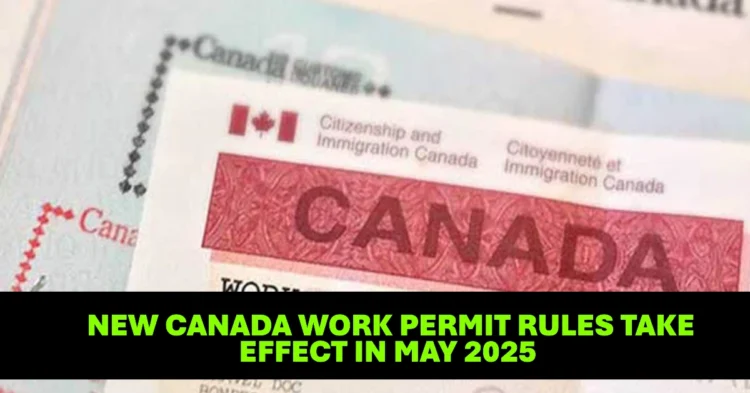On May 27, 2025, Canada introduced a transformative temporary public policy that marks a significant departure from previous work permit rules. This new measure allows temporary foreign workers (TFWs) with valid status in Canada to start new jobs immediately after applying for a new work permit—without waiting for approval.
Implemented under Section 25.2 of the Immigration and Refugee Protection Act (IRPA), the policy is designed to tackle ongoing labor shortages and provide more flexibility and security for foreign workers.
Table of Contents
Why This Policy Matters Now
Persistent labor shortages in sectors like healthcare, agriculture, and construction have created urgent demands for policy reform. This new initiative builds upon emergency measures from the COVID-19 era but goes further in creating a permanent, adaptable framework for workforce mobility within Canada.
Key Benefits of the New 2025 Work Permit Policy
A Smoother Transition for Workers
Under the old rules, TFWs had to wait weeks—sometimes months—for their work permits to be approved before starting a new job. This delay often caused:
- Lost income
- Unemployment periods
- Missed job opportunities
Now, workers can transition as soon as they submit their application, providing greater financial and professional stability.
Streamlined Hiring for Employers
Employers previously faced frustrating delays when trying to hire already-present skilled workers. This policy allows them to:
- Fill positions faster
- Reduce recruitment costs
- Access a larger pool of available labor
A Win for Canada’s Economy
By enabling job mobility, the government ensures a more efficient allocation of skills and resources, helping key industries grow without relying on new overseas labor inflows.
Who Can Benefit: Eligibility Criteria Explained
To qualify for this new policy, a worker must meet the following conditions:
Basic Requirements
- Be physically present in Canada
- Hold valid temporary resident status
- Have submitted a work permit application—either a renewal or new request—under the Temporary Foreign Worker Program (TFWP) or International Mobility Program (IMP)
- Have a job offer for a new employer or position
Additional Steps
- Apply for the public policy exemption through Immigration, Refugees and Citizenship Canada (IRCC)
- Request temporary authorization to work while the application is pending
Who Gains the Most From This Policy?
This policy is designed to support several categories of workers:
- TFWs on maintained status awaiting permit renewal decisions
- Workers laid off or seeking career advancement
- Those needing to switch employers due to workplace issues
- Work-permit-exempt individuals now requiring a permit for a new position
Exemptions That Make Job Changes Easier
To remove bureaucratic barriers, Canada is waiving several provisions of the Immigration and Refugee Protection Regulations (IRPR), including:
- Restrictions on when a temporary resident can work
- Conditions on employer-specific permits
- The need for a valid permit before beginning work in a new role
These exemptions remain valid until a final decision is made on the work permit application or the application is withdrawn.
Ontario Announces Updates to Provincial Immigration Nominee Program
Mark Carney’s Bold Immigration Strategy What It Means for PRs, Students, in 2025
Step-by-Step: How the Policy Works in Real Life
1. Receive a Job Offer
The worker secures employment with a new employer or in a different role.
2. Submit the Work Permit Application
This can be a new application or a renewal under the TFWP or IMP.
3. Apply for the Exemption
The worker files an exemption request via IRCC’s electronic portal (or alternative method if required).
4. Start Working
Once the exemption is granted, the worker can begin the new job immediately—no need to wait for full permit processing.
5. Await Decision
The worker continues in their new role while IRCC processes the work permit application.
Frequently Asked Questions
Can I really start working right after applying for the exemption?
Yes. Once the exemption is granted by IRCC, you are authorized to start your new job immediately—even if the full permit hasn’t been approved yet.
What if my work permit application is denied?
If the application is refused or withdrawn, your exemption ends, and you must stop working unless you receive new authorization.
Does this apply to people currently exempt from needing a permit?
Yes, work-permit-exempt individuals can use this policy if they now require a permit to work in a new role or with a new employer.
Challenges and Ongoing Concerns
While the policy is widely welcomed, a few concerns remain:
Processing Bottlenecks
The exemption system still requires IRCC review. Delays could occur, especially if demand surges.
Limited Awareness
Many workers may be unaware of the policy or face language barriers navigating the application process.
Employer Responsibilities
Employers must ensure they follow TFWP or IMP rules when issuing job offers, which may include additional paperwork or compliance steps.
Final Thoughts: A Progressive Step for Canadian Immigration
This new work permit policy represents a bold move by the Canadian government to modernize its temporary labor framework. By allowing temporary foreign workers to transition jobs without unnecessary waiting periods, Canada is addressing both worker well-being and economic needs.
Whether you are a worker seeking better opportunities or an employer urgently looking to fill gaps, this policy offers a faster, fairer path forward.

